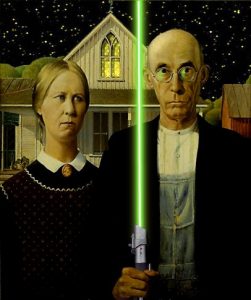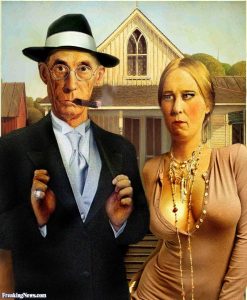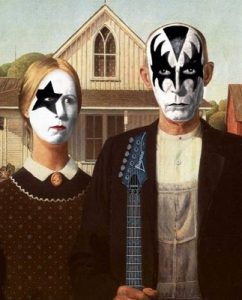Gordon Parks made a huge statement with his photograph of Ella Watson, naming it American Gothic. A clear critique of the state of the country in 1942, Parks attempted to capture a screenshot of life in Washington, D.C. Parks claimed to experience bigotry unlike anything he had witnessed before while working in that city and felt very passionately about the issue.[1] Ironically, Parks was commissioned to work for the Farm Security Administration when he took this picture with the goal of bringing attention to the poverty among white farmers in the Midwest and West.[2] This photo that Parks took has the same effect that the administration was hoping for, just with a different demographic in the spotlight. Parks highlights the struggle of black citizens during this time. Ella Watson is portrayed as hard working, but her expression and the set-up of the picture speaks volumes about the situation she is in.
Photography can be an immensely moving platform for fighting for a cause, and a modern-day example, very similar to Parks’ work is shown in Colin Kaepernick’s photo-shoot with GQ for winning “Man of the Year”. Colin Kaepernick is famous for fighting for equal rights through his popularity as a quarterback in the NFL. A huge supporter of Black Lives Matter, Kaepernick drew national attention as he silently protested by kneeling during the national anthem before his games. He was shown massive support from teammates and other players around the league, but was heavily criticized by many white Americans, being told to stay in his place and shut up and play football.
People called him a hypocrite for protesting for equal rights when he was making millions of dollars a year, but the GQ photo-shoot speaks volumes for Kaepernick’s cause. He is shown in Harlem, among the people that he was fighting so heavily for.[3] Just like American Gothic by Parks, the photo shows Kaepernick and the people of Harlem in “natural” settings that are meant to portray their lives and their situations. This photo-shoot was meant to highlight Kaepernick and his cause, but I feel that it also does a very good job of bringing attention to people in bad situations who need help, similar to the goal of the Farm Security Administration. If Grant Wood’s painting was the first American Gothic, and Parks’ photo was the second American Gothic, I think that these photos of Kaepernick can be considered the third installment of the American Gothic series.
[1] “American Gothic, Washington, D.C., 1942,” Arts MIA. https://collections.artsmia.org/art/100557/american-gothic-washington-d-c-gordon-parks
[2] “Farm Security Administration,” Wikipedia. https://en.wikipedia.org/wiki/Farm_Security_Administration#Photography_program
[3] Martin Schoeller, “Colin Kaepernick Will Not Be Silenced,” GQ. November 13, 2017. https://www.gq.com/story/colin-kaepernick-will-not-be-silenced





